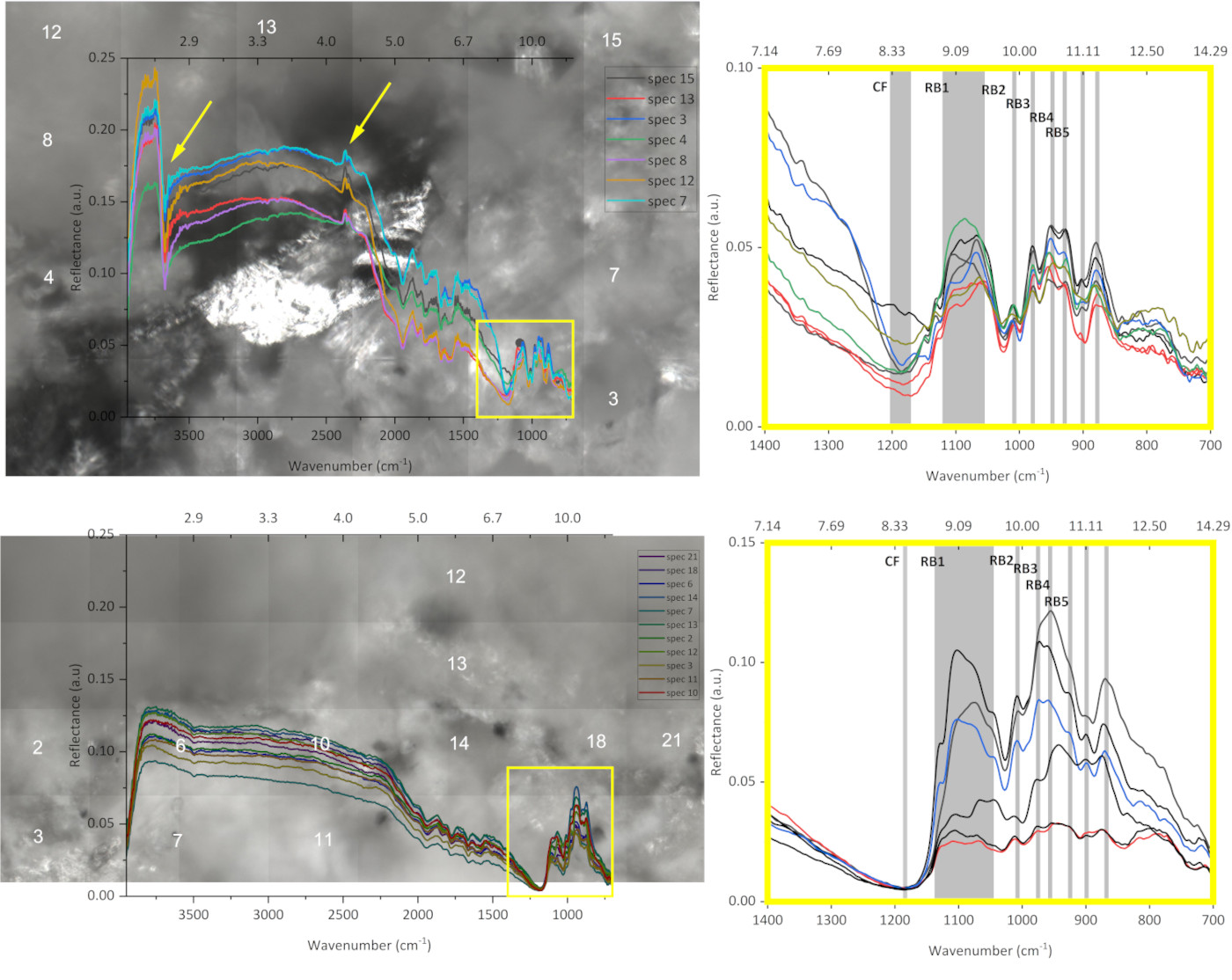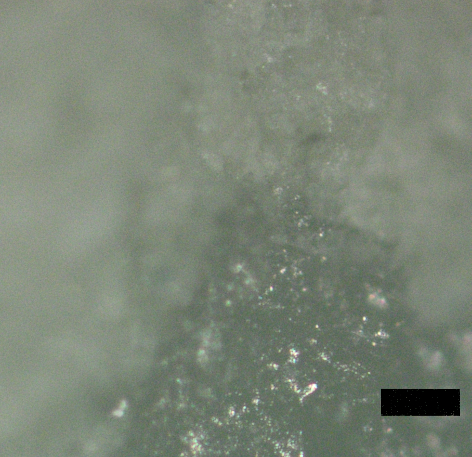- 1Westfälische Wilhelms Universität Münster, Institut für Planetologie, Geologische Planetologie, Münster, Germany (a.stojic@uni-muenster.de)
- 2Department of Geology, University of Tartu, Tartu, Estonia
- 3Department of Geosciences and Geography, University of Helsinki, Finland
- 4Department of Physics, University of Helsinki, Finland
- 5Institut für Planetenforschung, Deutsches Luft – und Raumfahrtzentrum (DLR), Berlin, Germany
Introduction: Mercury’s surface is exposed to a multitude of surface altering effects that have a significant influence on its optical properties. Impact events – small or large, are one of the major surface-altering agents. Inferred from hypothetical modal abundances[1] graphite can comprise up to 4wt% on Mercury’s surface. Graphite as a possible stable phase on Mercury can explain the relatively low albedo of the planet[2]. Our experimental setup probes the hypothetical impact into a graphite- and olivine–bearing, pyroxene-rich (Px(En87)=68wt%;Ol(Fo91)=29wt%,C=3wt%) surface. The effect of post-shock heating and pressure on a powder comprised of silicates with grain sizes ≤125 µm and graphite(hexagonal) was simulated in a classic shock recovery experiment[3]. The experiments were performed in the framework of the BepiColombo mission to Mercury. The onboard Mercury Radiometer and Thermal Infrared Spectrometer (MERTIS) will send thermal emissivity data once it reaches the Hermean orbit in 2025. A spectral database for mid infrared data is currently set up at the Institut für Planetologie in Münster. Published mid infrared data will soon be available and sample related spectral information of interest can be traced via assigned IDs (e.g., IDxxx).
Experimental set-up and µ-FTIR: One aliquot of the prepared powder mixture served as a blank(ID467) and was not shocked, the second (ID464) aliquot was filled into an ARMCO-Fe container. The cavity (ø=16mm;depth=2mm) that held the powder was lined with tantalum foil (thickness=50 µm) in order to avoid Fe0-metal contamination from the container. Graphite foil particles vary in size (mean=500µm). The foil was cut with a razor to avoid smearing. The calculated peak pressure at the steel/sample interface reached ca. 60 GPa. Pore space was crushed upon impact and contributed to increase the post-shock temperature significantly[4]. Preliminary spectral results were obtained with a Bruker Hyperion 3000. Spectra were measured in reflectance between 3950cm-1-700cm-1. Reflectivity was calculated by measuring a gold standard equaling the sample’s surface roughness. We used a 100x100 µm2 knife edge aperture to limit obtained spectral data from defined regions of interest (ROIs) and integrated over 256 scans to improve the signal/noise ratio.
Preliminary spectral results were obtained from both aliquots, ID467 and ID464. ID464 material was extracted from the steel container, from which spectral information were obtained (Fig.1bottom) and are compared to spectral data of the unshocked aliquot (Fig.1top).

Figure 1 top&bottom: ID467 spectra(top). Graphite (bright material) embedded in light grey silicate matrix. Areas with indices in micrograph correlate with spectra of same numbering. Yellow highlighted rectangles are magnified for clarity, RBs are labelled and discussed in text. ID464 spectra are plotted below. Pyroxene is dominant in both aliquots. The CF is located at 1187cm-1 in ID464. Both aliquots show comparable reflectance intensities. Yellow arrows denote CO2-related adsorption in ID467.
Results and discussion: We observed a dark pumice-like mass protruding perpendicular to the shockwave propagation direction. The center part of the sample shows a glassy luster (e.g.,Fig.2) which is indicative of melt formation.

Figure 2: Light microscope image of graphite (dark) embedded in “fluffy”glassy matrix (arrow). Scale bar is 100 µm.
ID464 compacted entirely during impact and shows a clearly distinguishable Christiansen feature (CF; a material characteristic reflectance minimum) at 1187cm-1 (similar to CF(En87)=1193cm-1. The CF of ID467 is difficult to determine. The shallowing of the adsorbed CO2-related absorption band[5] at 3677cm-1 steepens the slope towards shorter wavenumbers. Glassy material was identified in many areas. However, crystalline pyroxene surviving the impact is easily distinguished in the electromagnetic range between 1187cm-1-700cm-1, where vibrational normalmodes/or Reststrahlenbands (RBs) of silicates typically occur. RB1 of ID464 (see Fig. 1 bottom) has a shoulder at 1131cm-1, a double peak at 1103cm-1 and 1074cm-1, and another shoulder at 1043cm-1. RBs of both silicate starting materials occur in this range (En87 at 1131cm-1,1107cm-1,and 1056cm-1, and Fo91 at 1063cm-1and 1056cm-1). The envelope of the RB1 region is identical in ID464 and 467, however, a shoulder peak at 1043cm-1 missing in the unshocked, appears in the shocked aliquot and broadens the base of RB1. Pure En87 has a remarkably invariant(energy-wise) RB at 1010cm-1 (ID467) that shifted to 1006cm-1 in ID464. RB3 of the Mg-pyroxene typical “triplet-RBs” (RB3, RB4, RB5 in Fig. 1 top) at 979cm-1 is similarly invariant, however, olivine has a stable RB nearby, at 981cm-1[6]. This band is shifted to a weak shoulder at 973cm-1, either indicating the absence of olivine due to melt formation, or a shock related shift of the En87-associated RB3. Augmenting chemical analyses will help to disambiguate this. Silicate material in direct contact with graphite displays a foam like texture (Fig. 2). Graphite is an excellent thermal conductor. Silicates and graphite have a large density gradient, when shock waves traverse the individual phases, graphite-grains experience significantly higher post-shock temperatures, and thus help in melting the silicate fraction[7]. Shock-related “pumice” pressed toward the outer cylinder margins is dark and has large, entrained cavities. Future chemical and µ-FTIR analyses of the entire ID464 will improve our understanding of how graphite though chemically inert “catalyzes” processes that either not/or insufficiently take place in its absence.
This work was funded by the DLR grants 50 QW 1701 and 50 QW 2201A. MERTIS group are A.N.S,A.M,H.H.,I.W.,M.P.R,K.E.B.,J.H.P.,J.H.
The authors thank U.Heitmann, F.Spaleck, P.Pelka and M.Artmeier for careful sample and cylinder preparation
References: [1] Vander Kaaden & McCubbin (2015), JGR: Planets, 120(2), 195-209 [2] Klima et al. (2018). Geophysical Research Letters, 45(7), 2945-2953. [3] Langenhorst & Deutsch (1994) EPSL, 125(1-4), 407-420. [4] Güldemeister et al. (2013) Meteoritics & Planetary Science, 48(1), 115-133 [5] Bianchi et al. (1994) Applied Catalysis A: General, 112(2), 219-235. [6] Stojic et al. (2021) Icarus, 357, 114162. [7] Moreau & Schwinger (2021) Physics of the Earth and Planetary Interiors, 310, 106630.
How to cite: Stojic, A. N., Moreau, J.-G., Kohout, T., Penttilä, A., Morlok, A., Weber, I., Reitze, M. P., Hiesinger, H., Schmedemann, N., Joeleht, A., Bauch, K. E., Pasckert, J.-H., and Helbert, J.: Impact into a regolith: A shock recovery study of a graphite-bearing surface, Europlanet Science Congress 2022, Granada, Spain, 18–23 Sep 2022, EPSC2022-813, https://doi.org/10.5194/epsc2022-813, 2022.

